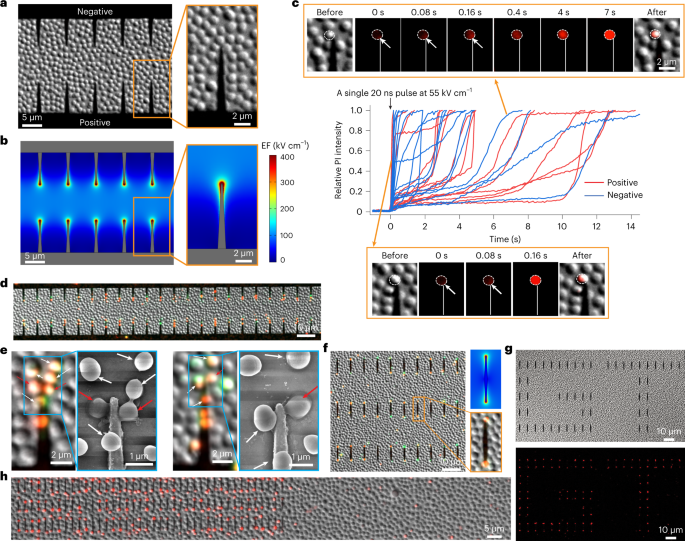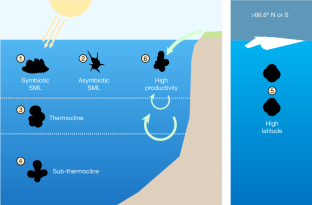2023-02 ジョージア工科大学
◆ジョージア工科大学の研究者たちは、小さな電気の衝撃を利用して水を消毒し、エネルギー消費、コスト、環境への影響を低減する方法を発見しました。この技術は、電力網に統合することも、バッテリーで駆動することも可能です。
◆土木環境工学部のカールトン・S・ワイルダー助教授は、「これはかなり新しい殺菌技術で、まず小規模で実証し、次にポイントオブユースやオフグリッドの浄水への実際の応用を改善したいと考えています」と語っています。
◆謝と博士課程の学生である王廷は、1月に『Nature Water』に論文を発表しています。
◆電気を局在化させる:従来の電界処理(CEFT)は食品の低温殺菌に応用されているが、飲料水の殺菌には比較的高価であるため、あまり利用されてこなかった。水と細菌に電気を流すと、細菌の細胞膜が回路のコンデンサーのように作用する。一般にCEFTでは、水の伝導性が低いため、ナノ秒のパルスでは細菌を殺すのに十分な速さで膜を充電することができない。
◆そこで研究者らは、局所強化電場(LEEFT)を作り、バクテリアに直接電気を供給することにした。この電極には金ナノチップが使われており、電気に接続すると瞬時に濃縮された電荷が蓄積され、電荷が膜に移動して細菌をより速く死滅させることができるのです。
◆電気的イノベーション:この技術をテストするために、彼らはチップの電極端に金ナノウェッジを作製しました。この細菌は、研究室でよく使用され、水系でもよく見かける細菌です。次に、電気パルスを印加して、細菌がどのように反応するかを顕微鏡でリアルタイムに観察した。
◆1センチメートルあたり40キロボルトの電気を200ナノ秒間流すと、95%のナノウエッジが細菌を死滅させることに成功した。LEEFTは従来のEFTに比べ、印加する電界強度を8倍低くし、治療時間を100万倍に短縮することができました。
◆「ナノ秒のパルスでも、LEEFTでは細菌を殺すことができ、他の状況では殺せないことがわかりました」とWangは言う。この瞬間的な除染により、水の消毒に必要な電力が削減されるため、安価な衛生設備として利用でき、きれいな水を作るための環境負荷が軽減される未来が期待されます。
<関連情報>
- https://research.gatech.edu/new-ultrafast-water-disinfection-method-more-environmentally-friendly
- https://www.nature.com/articles/s44221-022-00003-2
局所増強電界処理によるナノ秒の細菌不活性化技術 Nanosecond bacteria inactivation realized by locally enhanced electric field treatment
Ting Wang & Xing Xie
Nature Water Published:12 January 2023
DOI:https://doi.org/10.1038/s44221-022-00003-2

Abstract
Bacterial contamination in water is still a critical threat to public health; seeking efficient water disinfection approaches is of great significance. Here we show that locally enhanced electric field treatment (LEEFT) by electrodes modified with nanoscale tip structures can induce ultrafast bacteria inactivation with nanosecond electrical pulses. A lab-on-a-chip device with gold nanowedges on the electrodes is developed for an operando investigation. Attributed to the lightning-rod effect, the bacteria at the nanowedge tips are inactivated by electroporation. A single 20 ns pulse at 55 kV cm−1 has achieved 26.6% bacteria inactivation, with ten pulses at 40 kV cm−1 resulting in 95.1% inactivation. LEEFT lowers the applied electric field by about 8 fold or shortens the treatment time by at least 106 fold, compared with the system without nanowedges. Both Gram-positive and Gram-negative bacteria, including antibiotic-resistant bacteria, are inactivated with nanosecond pulses by LEEFT. According to simulation, when the membrane of the cell located at the nanowedge tip is directly charged by the concentrated charges at the tip, it is charged much faster and to a much higher level, leading to instant electroporation and cell inactivation.



